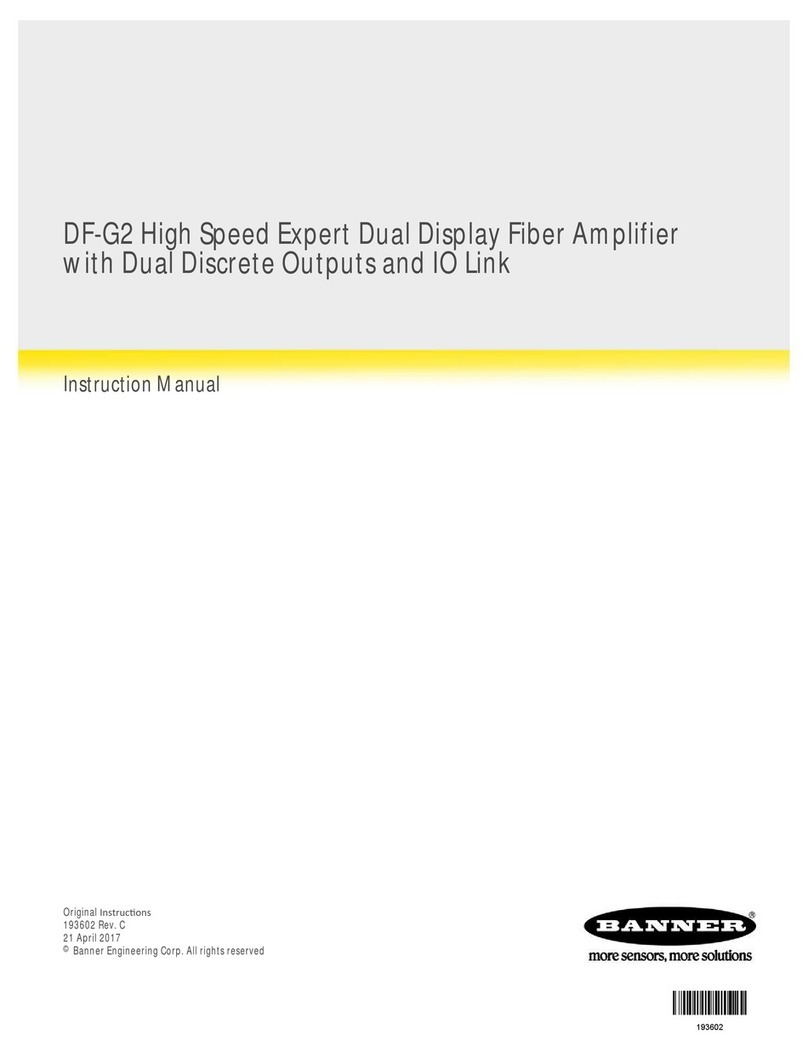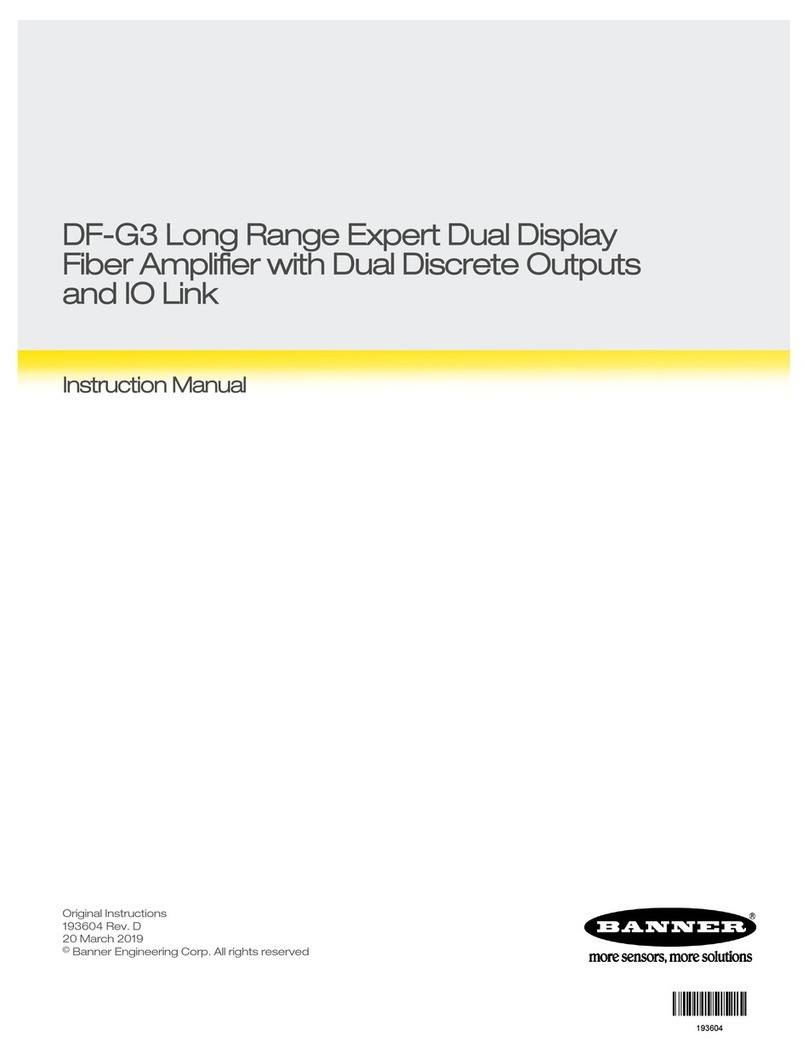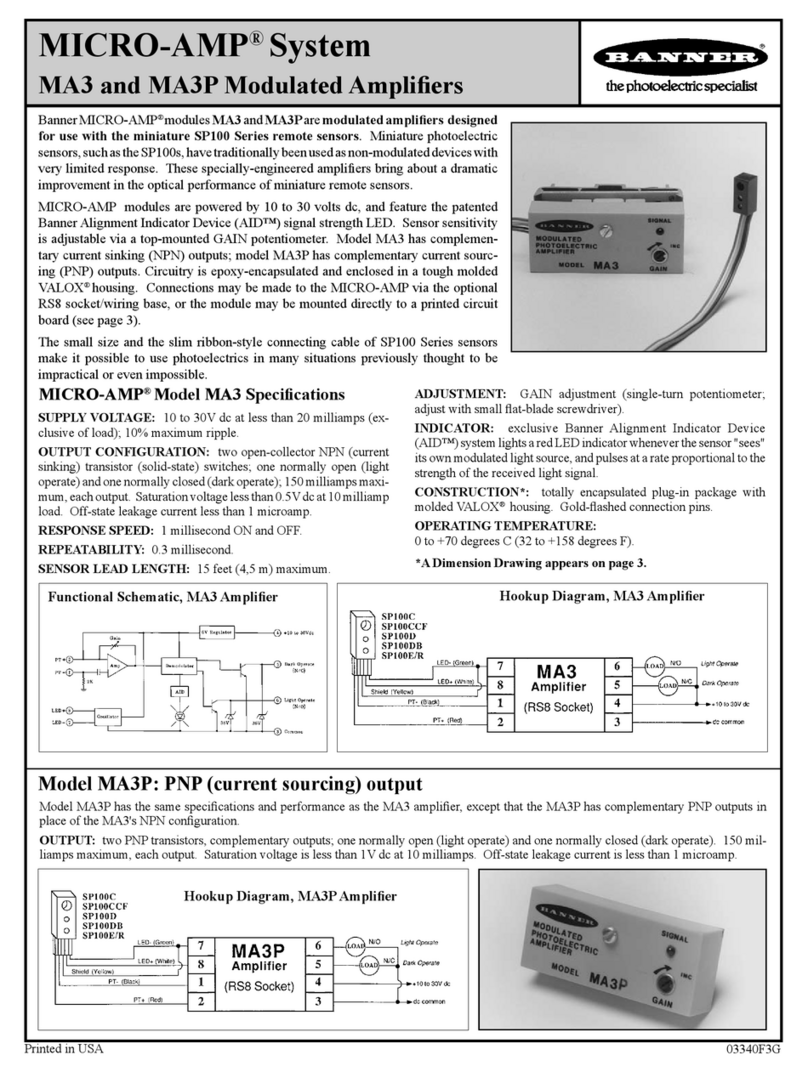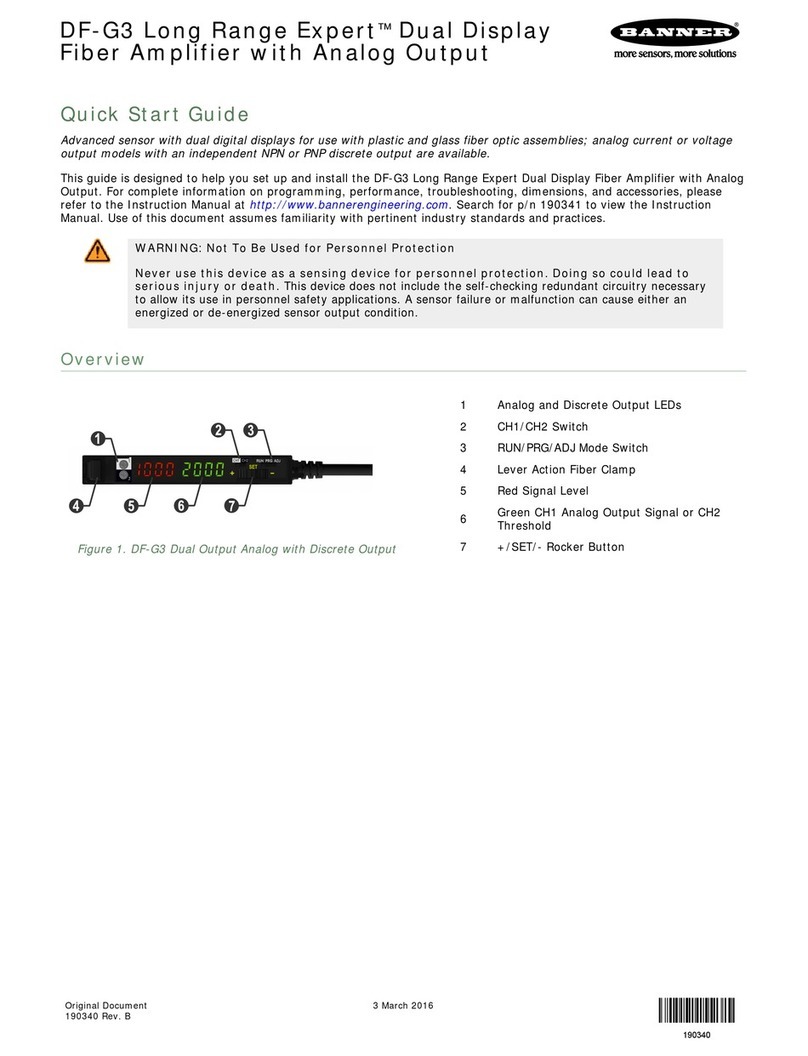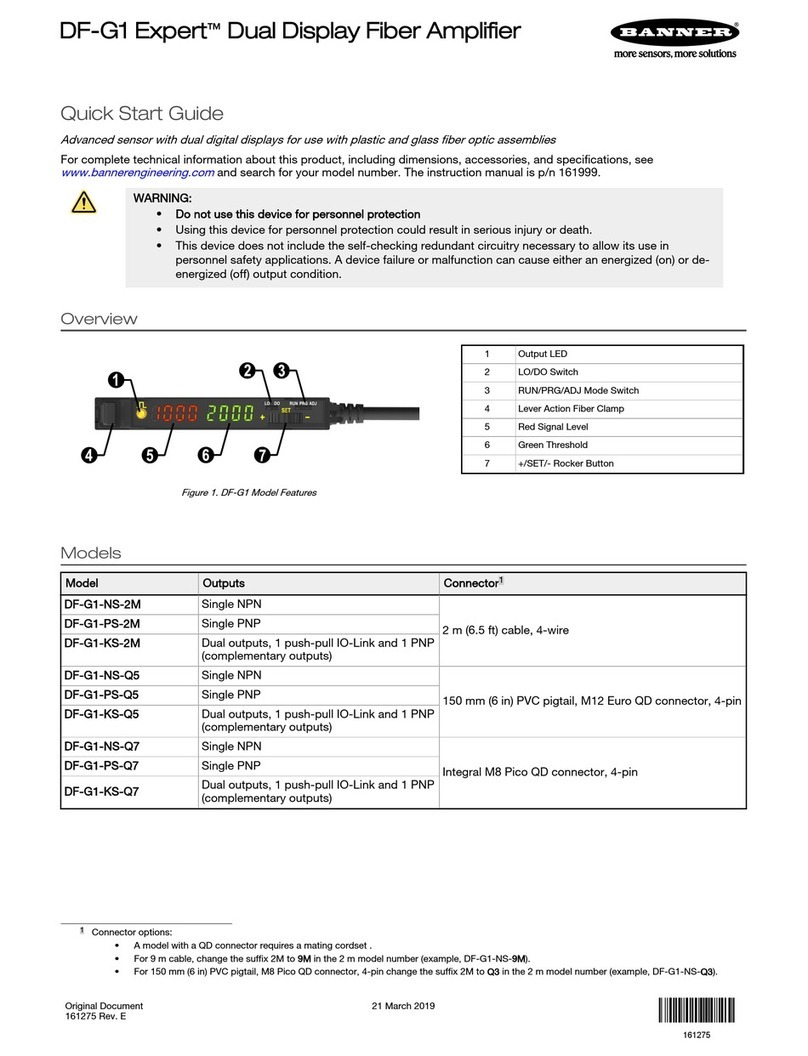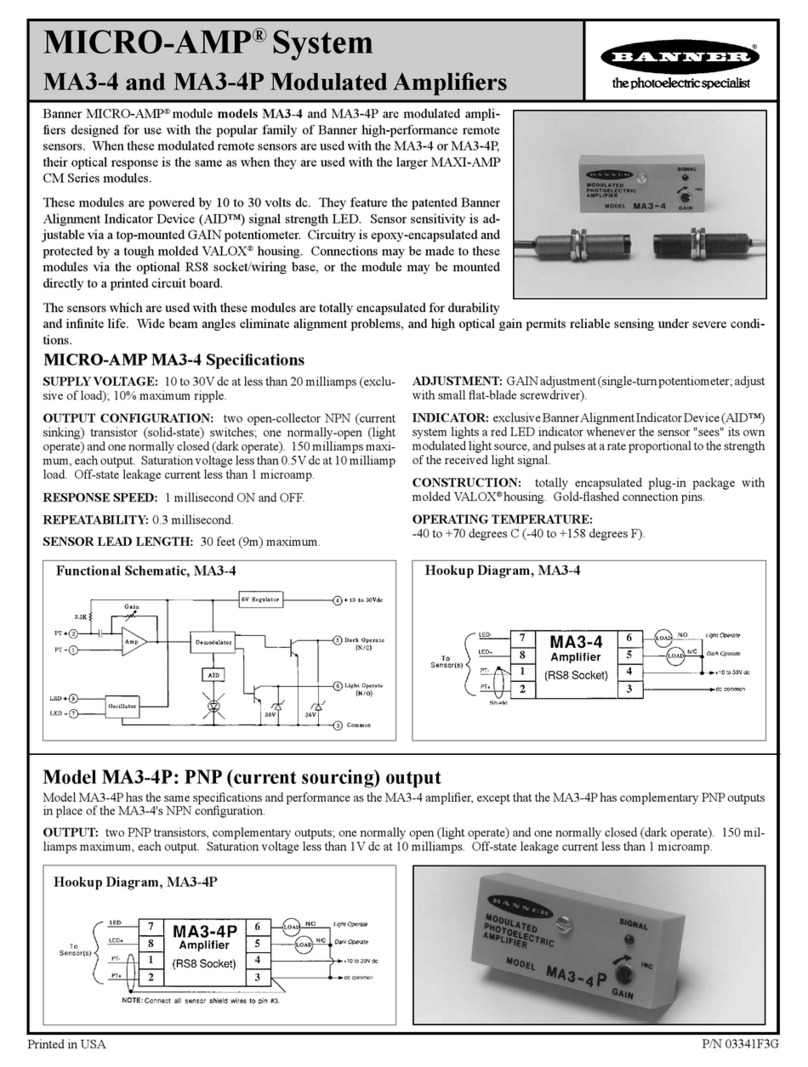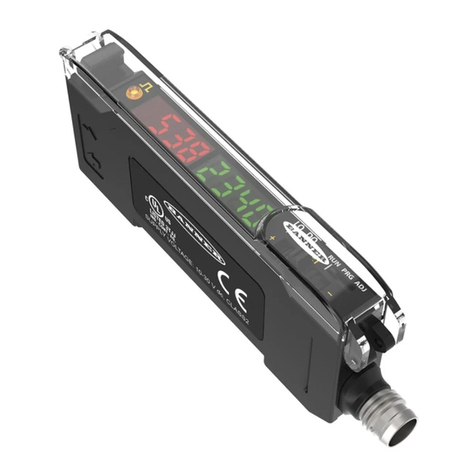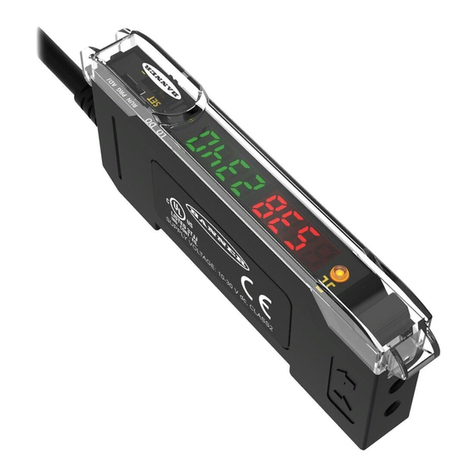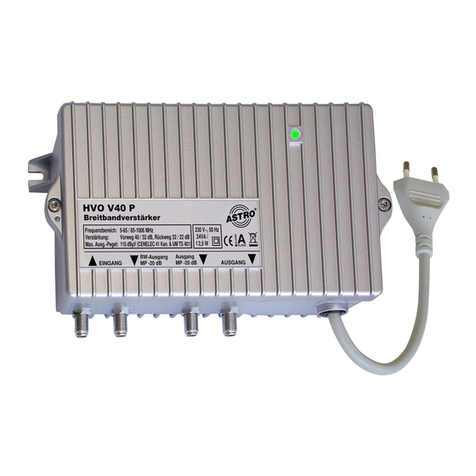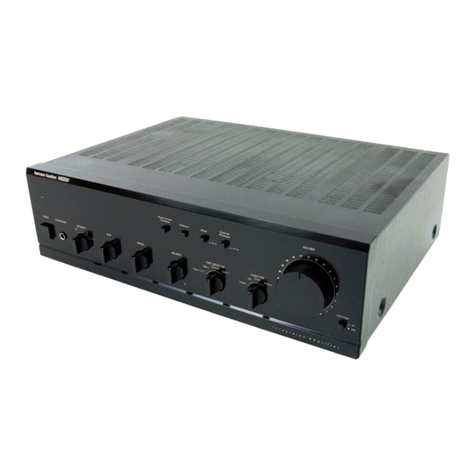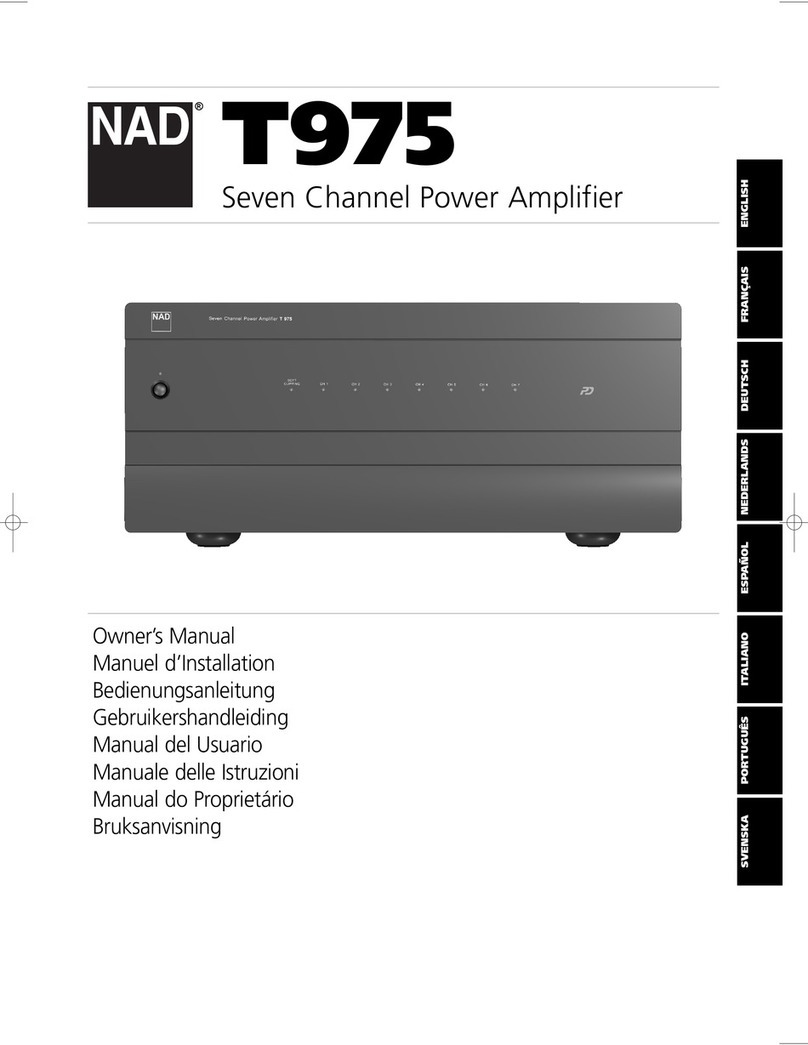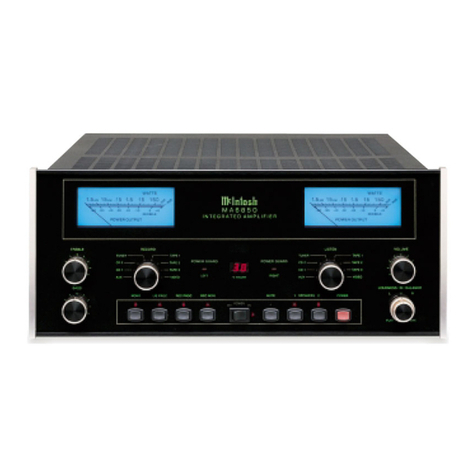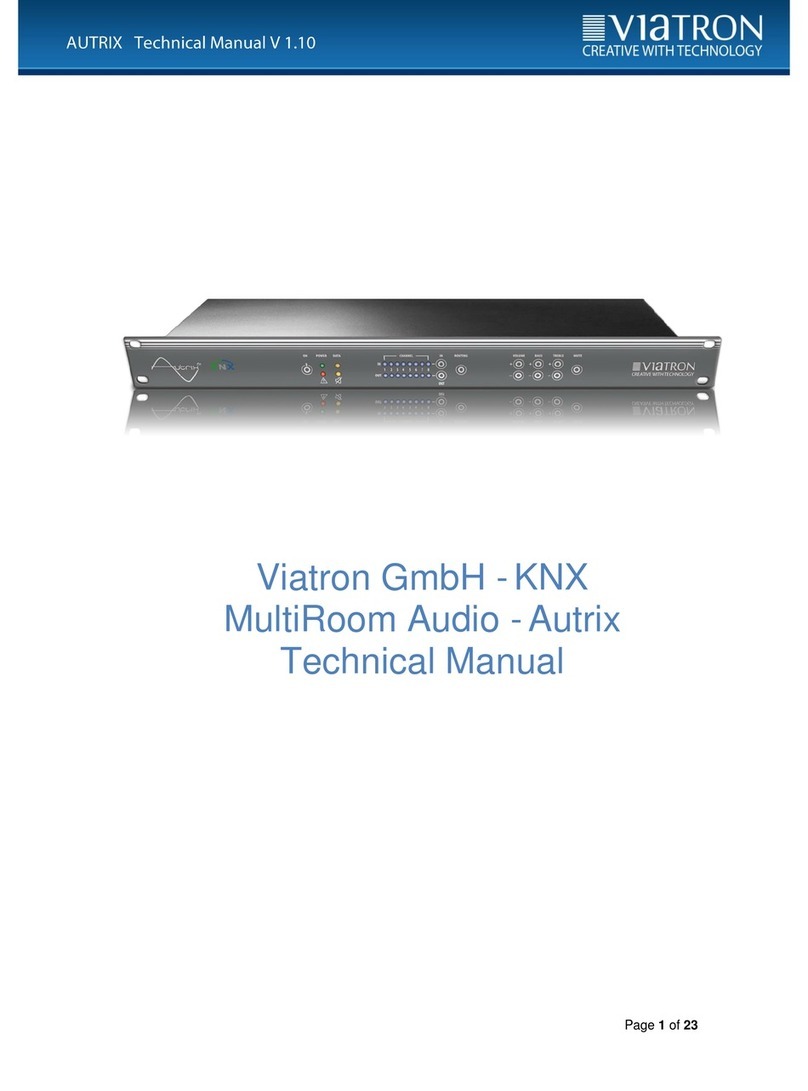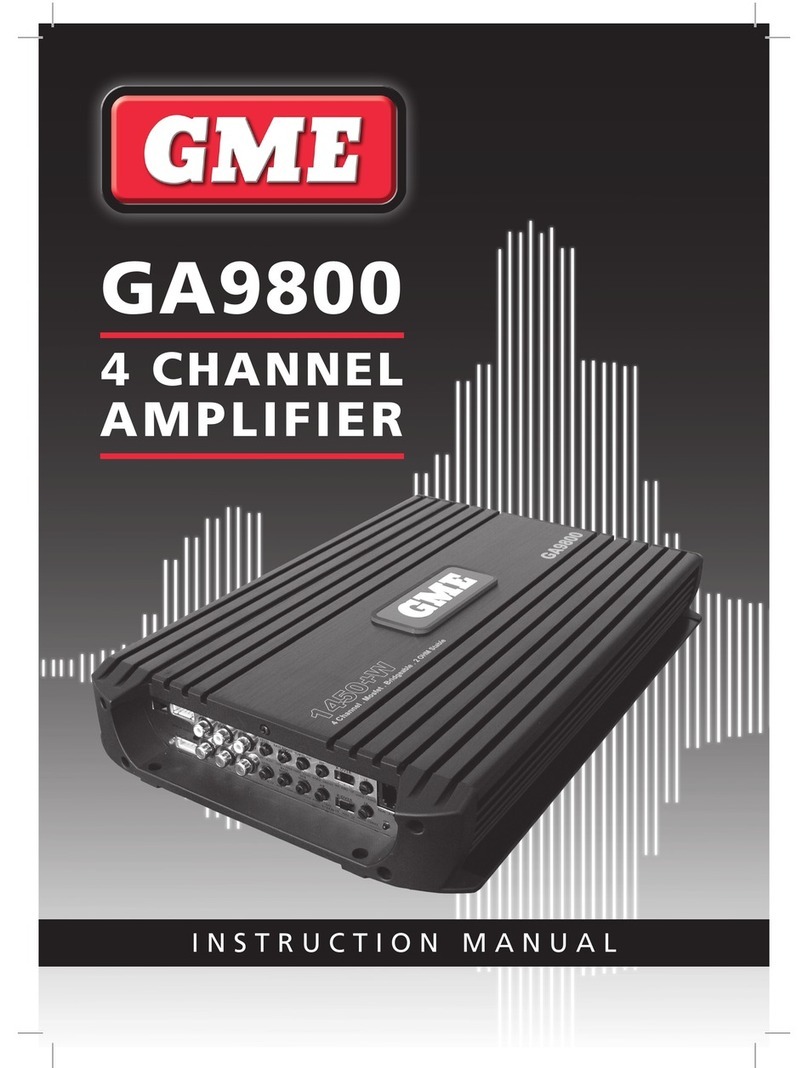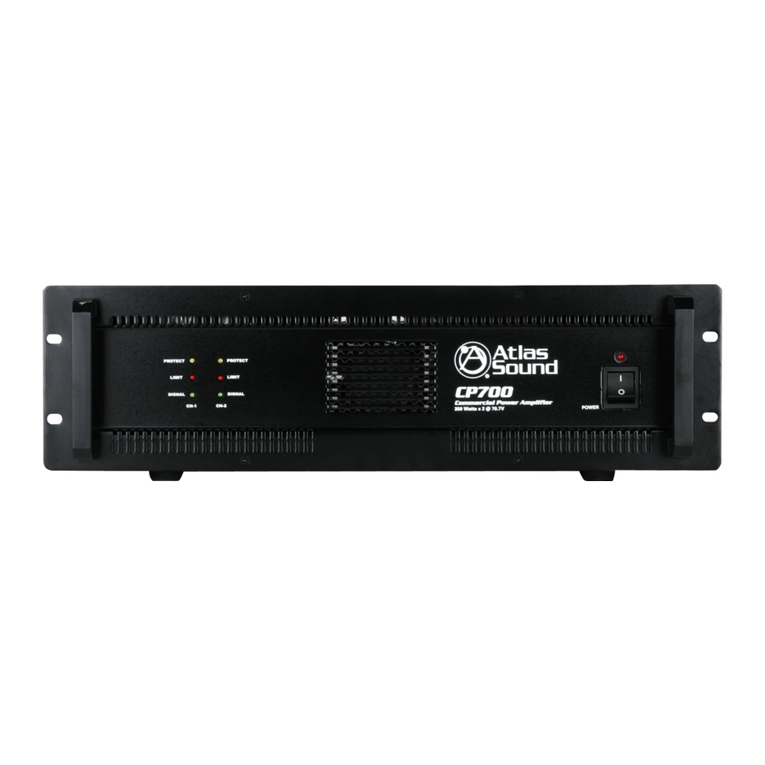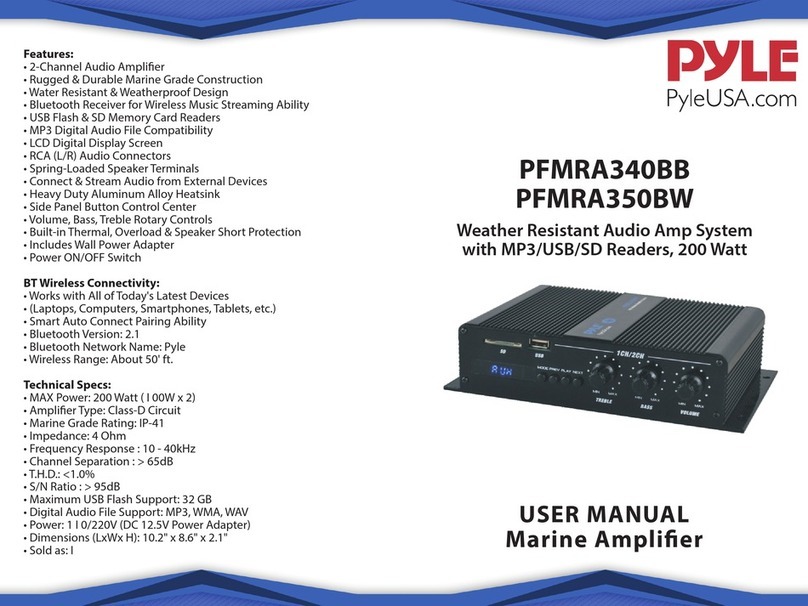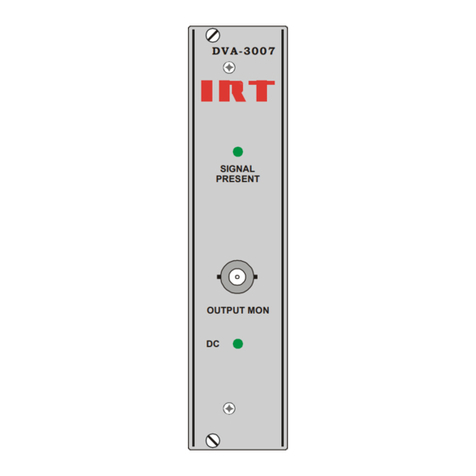PICO-AMP Miniature Remote Sensing System
Delrin®is a registered trademark of Dupont Co.
PICO-AMP MD14 Amplifier Specifications
Sensor compatibility PICO-AMP amplifier models MD14BB6 and MD14BB6Q are compatible with the following remote sensors:
SP3ER1, SP3ER2, SP8ER1, SP8ER2, SP3D1
Supply voltage and current 10 to 30V dc (10% maximum ripple) at less than 55 mA (exclusive of load)
Output Configuration Bipolar, one current sourcing (PNP) and one current sinking (NPN) open-collector transistor
Output Protection Circuitry Protected against false pulse on power-up and continuous overload or short-circuit of outputs
Adjustments/programming
Light/Dark Operate Select switch
OFF-delay Select switch: 0 or 50 ms
4-position Frequency Select switch: Auto, Freq 1, Freq 2, Freq 3
12-turn slotted brass screw Gain (Sensitivity) adjustment potentiometer (clutched at both ends of travel)
Indicators
Green: ON Steady = Power to amplifier is ON
Flashing = Output is overloaded
Yellow: ON Steady = Light is sensed
Flashing = Marginal excess gain (1 to 1.5x) in light condition
Construction Housing: Yellow polycarbonate/ABS alloy, rated UL94 V-0
Cover: Gray-tinted polycarbonate
DIN spring clip: Yellow Delrin®(acetal)
Environmental Rating IP50, NEMA 1
Operating Conditions Temperature: 0° to +55° C (+32° to 131°F)
Maximum relative humidity: 90% at 50° C (non-condensing)
Application Notes Always remove power to amplifier before connecting or disconnecting sensors.
See page 3 for a discussion of the Frequency selection; Manual frequency selection increases sensing
hysteresis.
Supply Protection Circuitry Protected against reverse polarity and transient voltages.
Output Rating
100mA maximum, each output
Off-state Leakage Current: less than 5µA
Output Saturation Voltage: PNP output less than 1V @10mA; less than 1.5V @ 100mA
NPN output less than 0.2V @ 10mA; less than 0.75V @ 100mA
Output Response Time
Frequency Selection Response Time
Auto 500 microseconds ON/ 350 microseconds OFF
Freq 1 350 microseconds ON/ 250 microseconds OFF
Freq 2 450 microseconds ON/ 300 microseconds OFF
Freq 3 500 microseconds ON/ 350 microseconds OFF
NOTE 1: Auto mode defaults to Freq 1 at power-up
NOTE 2: Response time will increase with adjacent sensor interference.
Connections
Sensor(s): four M2.5 zinc-plated steel SEMS screws
Power and Outputs: PVC-jacketed 4-conductor 2m (6.5') or 9 m (30') attached cable, or 4-pin Pico-style
quick-disconnect fitting
QD cables are ordered separately (see Accessories)
Certifications

